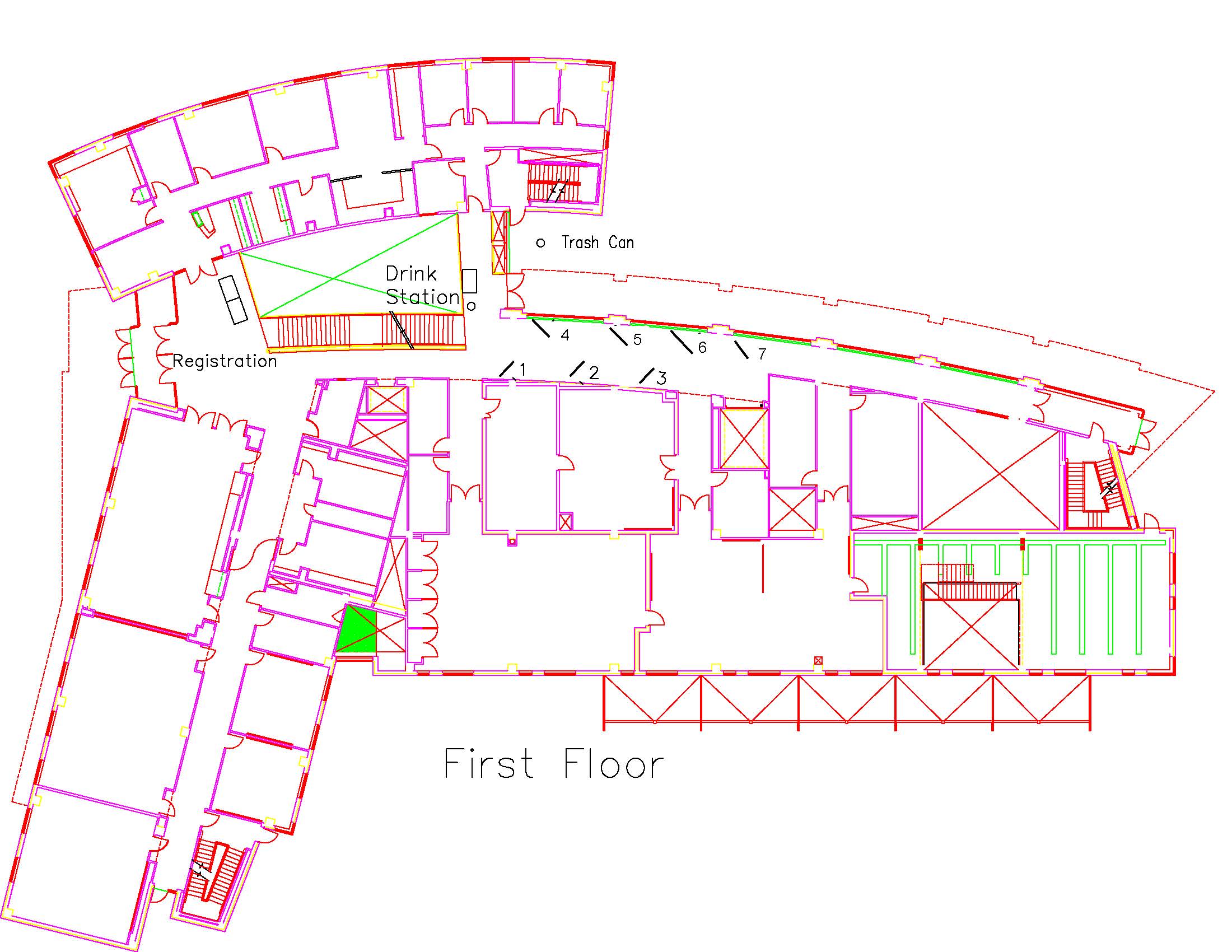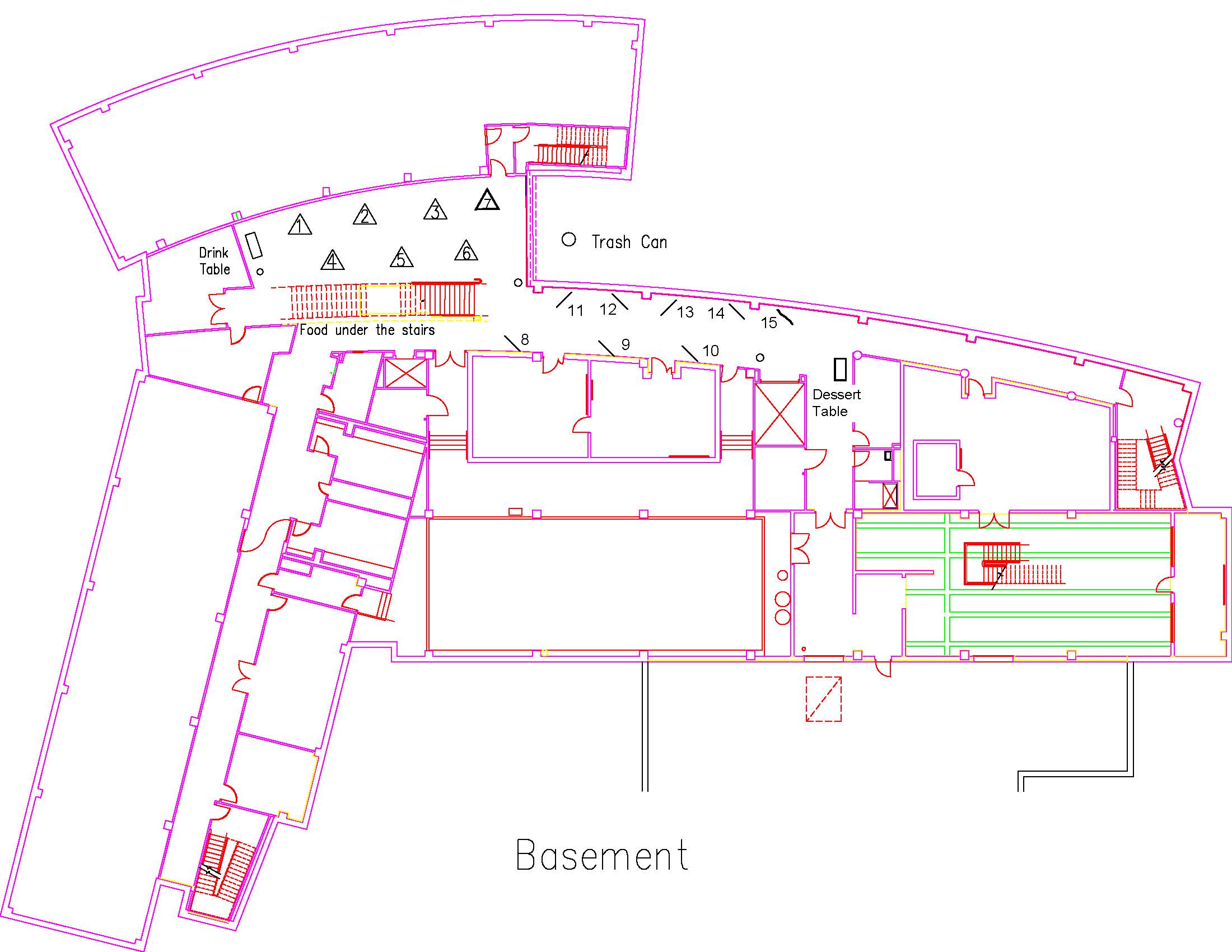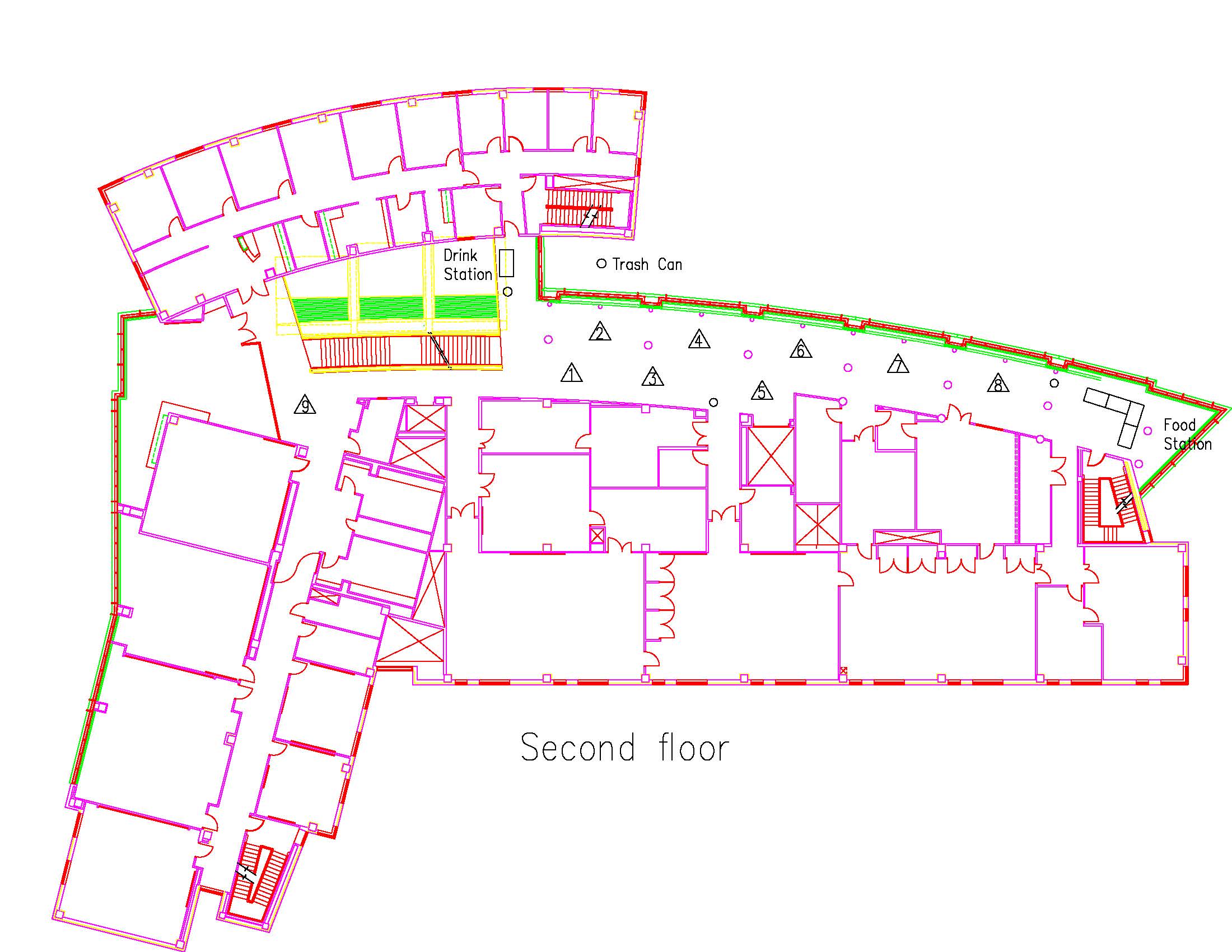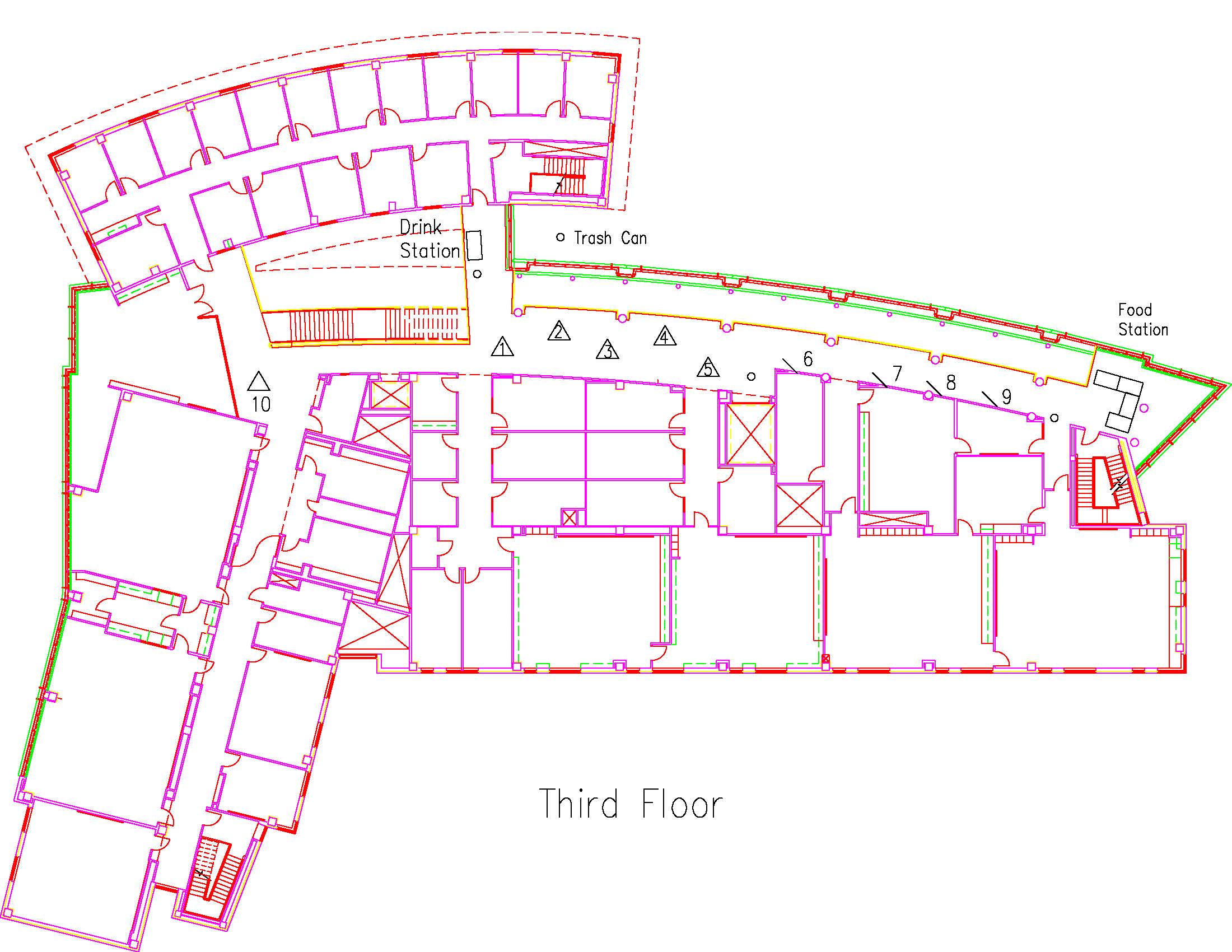PSYC2019OLIVEIRA42715 PSYC
An Evaluation of the Efficiency of Equivalence-Based Instruction
Type: Undergraduate
Author(s):
Juliana Oliveira
Psychology
Camille Roberts
Psychology
Advisor(s):
Anna Petursdottir
Psychology
Location: Session: 2; 1st Floor; Table Number: 3

View PresentationFew studies have directly evaluated the assumption that equivalence-based instruction establishes stimulus classes with greater efficiency than direct instruction of all possible stimulus relations within each class. Therefore, this study evaluated the efficiency of EBI protocol compared to direct instruction (DI), using fifteen visual abstract stimuli (A1 through E3). Forty-eight undergraduate students were assigned to one of four groups: The EBI-DI group received EBI in Phase 1 and DI in Phase 2, and vice versa for DI-EBI group. EBI-EBI and DI-DI group received EBI and DI in both phases, respectively. In Phase 1,EBI-first groups received training on AB and BC relations and DI-first groups received training with all possible relations. After achieving mastery criterion, the ABC test included all possible trial types. In Phase 2, all groups received training to (a) add a fourth stimulus (D), and (b) add a fifth stimulus (E) to the class. No statistically significant difference was found between EBI and DI-first groups in the number of trials, reaction time during test and overall trials to achieve criteria and the performance in ABC test. There was an interaction between the first training condition (EBI vs. DI) and the second training condition (EBI vs. DI) on percentage accuracy in the first ABCD test, but not in ABCDE test.
PSYC2019PAI44027 PSYC
Associations between Nostalgia and Attitudes towards Intimate Partner Violence
Type: Undergraduate
Author(s):
Anita Pai
Psychology
Cathy Cox
Psychology
Julie Swets
Psychology
Malia Yraguen
Psychology
Advisor(s):
Cathy Cox
Psychology
Location: Session: 1; Basement; Table Number: 6

View PresentationThis study explored the extent to which nostalgia proneness (a sentimental longing for the past) is associated with attitudes towards intimate partner violence (IPV). Research has found that individuals who report more conflict in their romantic relationships also report being more nostalgic for their own and for their relationships’ past. If nostalgia is related to more conflict in relationships, then it may also be related to greater acceptance of IPV. In this study, a sample of 142 participants completed measures of self-relevant nostalgia, relationship-relevant nostalgia, and attitudes toward IPV (using it and enduring it), and relationship outcomes (e.g., optimism, satisfaction, commitment). Results showed positive correlations between nostalgia (self-oriented and relationship-centered) and self-use of IPV (both using it and enduring it). These preliminary results suggest that a sentimental longing for the past is associated with endorsement of IPV use, however, other unexplored personality variables such as attachment style may moderate these associations. Future work should explore these findings in experimental and longitudinal designs.
PSYC2019PENN9049 PSYC
Regulation of Emotional Learning in Older Adults
Type: Undergraduate
Author(s):
Daniel Penn
Psychology
Paige Northern
Psychology
Amber Witherby
Psychology
Advisor(s):
Uma Tauber
Psychology
Location: Session: 2; Basement; Table Number: 12

View PresentationInvestigating how people regulate their learning is important because study decisions can impact actual learning. Compared to younger adults, older adults often show age-related deficits in memory. This deficit may be because older adults are less effective at regulating their learning. One factor that can influence memory is the valence of information. Prior research has established that older and younger adults are more likely to recall emotional information compared to neutral information and also predict that emotional information will be better remembered relative to neutral information (e.g., Tauber & Dunlosky, 2012). It is unclear how both age groups regulate their learning of emotional and neutral information. Investigating this issue, older and younger adults studied words that were positive (e.g., circus), negative (e.g., snake), or neutral (e.g., fork). Participants regulated their learning by self-pacing their study (Experiment 1) or by selecting half of the words to restudy (Experiment 2). After studying each word, participants predicted the likelihood of remembering it on a scale of 0% (will not remember) to 100% (will remember). Finally, participants took a free-recall test. Consistent with prior research, both age groups demonstrated higher predicted and actual memory for emotional information relative to neutral. Importantly, both age groups’ self-paced study times did not differ for emotional and neutral information. In contrast, both age groups restudied neutral words more frequently than emotional words. Thus, when participants were forced to strategize their learning, both age groups made good study decisions, prioritizing neutral information at the expense of emotional information.
PSYC2019PITCOCK43755 PSYC
Effect of Auricular Vagus Nerve Stimulation on Novel Letter Learning in Dyslexia
Type: Undergraduate
Author(s):
Madeline Pitcock
Psychology
Abby Engelhart
Psychology
Grace Pecoraro
Psychology
Zoe Richardson
Psychology
Vishal Thakkar
Psychology
Advisor(s):
Tracy Centanni
Psychology
Location: Session: 1; 2nd Floor; Table Number: 8

View PresentationFor my SERC grant proposal, I studied the effect of auricular vagus nerve stimulation (aVNS) on learning in adults with dyslexia. The vagus nerve is a cranial nerve that, when stimulated, initiates the release of two neurotransmitters (NT’s) that are important in learning and memory (norepinephrine and acetylcholine). When a stimulus is presented at the same time as vagus nerve stimulation, this increases neural plasticity for the paired item. We have already tested this approach on typically-developing adults using the auricular branch of the vagus nerve, which runs through the ear and can be stimulated non-invasively. During this intervention, timed bursts of electrical stimulation were delivered while the participant learned novel letter-to-sound correspondences for Hebrew letters with the goal of increasing recall and automaticity. We have already found significant improvements in letter recognition, reading speed, and nonword decoding in typically-reading participants receiving stimulation compared to those in control groups. Our ultimate goal is to help children with dyslexia read more fluently. In the first step towards this goal, we enrolled a group of adult participants with dyslexia who received 10 days of Hebrew orthography training paired with aVNS. Participants were evaluated at four timepoints to monitor learning and compare progress with other groups: at day 1, halfway through training, at the end of training, and 3 weeks after training ended. We measured letter recognition, letter-to-sound fluency, and decoding at each time point. We will present our preliminary findings at SRS and discuss future directions.
PSYC2019SHORT15670 PSYC
Early Life Environmental Factors, Impulsivity, and Inflammation in Children
Type: Undergraduate
Author(s):
Tori Short
Psychology
Jeffrey Gassen
Psychology
Sarah Hill
Psychology
Summer Mengelkoch
Psychology
Advisor(s):
Sarah Hill
Psychology
Location: Session: 1; Basement; Table Number: 11

View PresentationEarly life stress has shown to be related to an increased preference for smaller, more quickly acquired rewards over larger, delayed rewards—or an inability to delay gratification—a fundamental component of impulsivity. Beyond this, impulsivity is also characterized by difficulty concentrating and exercising self-control and has been found to significantly impact learning and memory. Specifically, in children, higher impulsivity is associated with greater learning difficulties, such as with reading. Previous research has also shown that adults with higher levels of inflammation portray higher impulsivity. The current study aims to investigate the relationship between impulsivity, inflammation, and childhood environmental conditions within children between the ages of 3-17. Saliva samples were collected from 248 children visiting the Fort Worth Museum of Science and History in order to measure current levels of proinflammatory cytokines, which indicate immune activation. Children then participated in a series of tasks that measured their ability to concentrate, learn to inhibit their responses, and delay gratification, while background and demographic information was collected from their parents. Results will reveal whether children growing up in stressful environments also have higher levels of inflammation and impulsivity.
PSYC2019SULLIVAN34412 PSYC
Polarization of Moral Judgements
Type: Undergraduate
Author(s):
Sarah Sullivan
Psychology
Timothy Barth
Psychology
Kaleigh Decker
Psychology
KatieScarlett Ennis
Psychology
Charles Lord
Psychology
Vishal Thakkar
Psychology
Advisor(s):
Timothy Barth
Psychology
Location: Session: 2; 3rd Floor; Table Number: 3

View PresentationAttitude Representation Theory (Lord & Lepper, 1999) asserts that individuals evaluate attitudes based on a subset of associations. As this subset of associations varies, attitudes can vary as well. Previous research demonstrated that people can mistake self-generated information for provided information, through source monitoring errors (Johnson, Hashtroudi, & Lindsay, 1993), after extrapolating beyond the information given (Lu, 2015). We sought to apply ART and cognitive tasks (e.g., extrapolation, embellishment, and validity) by having participants judge the actions of fictitious groups. Although these groups are fictitious, they allude to current political viewpoints. We tested the effects of extrapolation (thinking about additional attributes of a target group; Experiment 1), embellishment (convincing a friend not to join the target group; Experiment 2), and biased assimilation (testing truth and validity of sources; Experiment 3) on polarization of moral judgments. Compared to a control group, embellishment polarized negative attitudes toward the group. The current set of studies could shed some insight about how people view issues, self-radicalize judgments, and understand thoughts of lone-wolf terrorists.
PSYC2019SWENSSON26152 PSYC
Evaluation of Equivalence-Based Instruction to Teach Children Elements of Music
Type: Undergraduate
Author(s):
Remington Swensson
Psychology
Reagan Cox
Psychology
Camille Roberts
Psychology
Juliana Sequeira Cesar de Oliveira
Psychology
Advisor(s):
Anna Petursdottir
Psychology
Location: Session: 1; 1st Floor; Table Number: 6

View PresentationThere are many benefits for children to receive music education. Research shows that note reading and music playing skills are positively correlated with cognitive development, motor proficiency, and self-esteem (Bilhartz, Bruhn, & Olson, 1999; Costa-Giomi, 2004; Schellenberg, 2004). The purpose of this study was to evaluate the use of equivalence-based instruction (EBI) to teach elements of music to children who have no music background in the age range of 4-7 years. The children first learned to relate the name of a note (e.g. “quarter”, “half”) to the length of the note as well as a picture of the note. They were also taught to name the lengths and names of sequences of notes (e.g. “quarter, quarter, half”). In the second part of this study, the children learned letter names of notes (e.g., “A”), keyboard placement, and what finger (e.g. thumb) goes with each letter name and piano key. Finally, we tested for emergent relations from part one and part two. Date collection in progress, but we predict to see emergence of relations between what was taught in part one and what was taught in part two. For example, when told “play this sequence on A,” participants will be able to use the correct finger on the correct piano key to play the notes in the sequence at the correct lengths.
PSYC2019WADE38311 PSYC
Role of the rodent amygdala circuitry in surprising nonreward
Type: Undergraduate
Author(s):
Zach Wade
Psychology
Shannon Conrad
Psychology
Sara Guarino
Psychology
Quynh Nguyen
Psychology
Mauricio Papini
Psychology
Advisor(s):
Mauricio Papini
Psychology
Location: Session: 1; 2nd Floor; Table Number: 5

View PresentationSince the 1920s, it has been recognized that nonhuman animals are capable of forming expectations about rewards and exhibit emotional responses when those expectations are violated—when obtained rewards have lower value than expected rewards. Our lab utilizes a rodent model for coping with unexpected reward loss with a specific interest in furthering our understanding of the underlying neural correlates. Frustration effects in rats are commonly and reliably produced using the consummatory successive negative contrast (cSNC) procedure, where rats are given access to a highly preferred 32% sucrose solution followed by an unexpected downshifted to 4% sucrose. Such surprising nonreward leads to a suppression of behavior compared to a control group that always received the less-preferred, 4% sucrose solution. Studies involving neurological manipulation indicate that permanent lesion or reversible deactivation of the central amygdala (CeA) and the basolateral amygdala (BLA) eliminate the cSNC effect. While these studies are important for identifying key structures, they provide little information about the underlying circuitry. The present research examined the role of the neural pathway between the BLA and CeA in the cSNC task using a chemogenetic approach known as Designer Receptor Exclusively Activated by Designer Drugs (DREADDs). Inhibitory DREADDs are intracranially infused into the key structures and later activated by intraperitoneal injections of clozapine N-oxide (CNO). Both groups of rats received unilateral inactivation of the BLA and CeA. The experimental (contralateral) group has one functioning area in each hemisphere, a procedure that disrupts communication between the two areas. The control (ipsilateral) group has one hemisphere disrupted while the other is left intact. Preliminary results indicate a disconnecting the BLA-CeA pathway reduces the cSNC effect in contralateral rats compared to ipsilateral rats. The BLA-CeA pathway is necessary to respond to surprising nonreward. These results add to the hypothesized model of circuity underlying unexpected reward loss in mammals. Because the amygdala circuitry is highly conserved across species, these results inform us about the neural circuitry engaged by similar instances of frustrative nonreward in the human brain.
PSYC2019WHITE49325 PSYC
The Role of Quest Religiosity in Medical Decision Making
Type: Undergraduate
Author(s):
Grace White
Psychology
Caroline Angell
Psychology
Advisor(s):
Cathy Cox
Psychology
Location: Session: 1; Basement; Table Number: 8

View PresentationAccording to Terror Management Theory, religious people are motivated to cling to their religious beliefs when reminded of their death. Quest motivated religious people, however, value doubt in their beliefs and are uncertain about the validity of their religion. The purpose of the present work was to examine medical decision making among individuals who actively question their religious beliefs when death concerns are salient. Specifically, we found that individuals who are quest motivated reject traditional faith healing in favor of more scientific medical practices. These effects were exacerbated by death awareness. These findings support previous research suggesting that quest individuals are motivated to embrace their religious doubts in when faced with existential concerns.
BIOL2018CALLAGHAN48892 BIOL
Identifying Cellular Proteins that Interact with Hepatitis C Virus Protein NS3/4A
Type: Undergraduate
Author(s):
Kaitlyn Callaghan
Biology
Advisor(s):
Giridhar Akkaraju
Biology
View PresentationHepatitis C Virus is estimated to infect 3% of the world’s population and is transmitted by contaminated blood. HCV can be asymptomatic or lead to cirrhosis of the liver, liver cancer or hepatocellular carcinoma. Understanding the virus life cycle and the viral proteins generated by HCV will help generate new mechanisms of inhibition of the virus. HCV produces 10 viral proteins when it infects hepatocytes that increase the reproduction ability of the virus. The anti-viral response of the body uses transcription factors such as ATF-2, NFKB, and IRF-3 that translocated into the nucleus and bind to the interferon gene that produces interferon to alert the body of a viral infection. HCV viral protein NS3/4A acts as protease to cleave the polycistronic strand of viral proteins made by HCV and is known to inhibit IRF-3 movement into the nucleus to inhibit the production of interferon. HCV viral protein NS5A is known to inhibit the movement of transcription factor NFKB into the nucleus, thus inhibiting the anti-viral response. We are interested to see if NS3/4A inhibits the anti-viral response by blocking the movement of both transcription factors IRF-3 and NFKB into the nucleus.